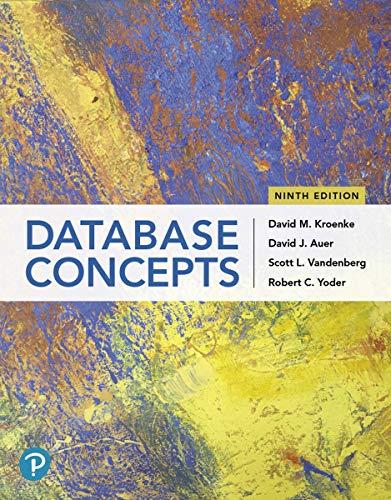Question
The following table displays a set of processes to be executed on a single processor system. The first column is the process ID, and the
The following table displays a set of processes to be executed on a single processor system. The first column is the process ID, and the second column is the priority level of those processes (lower number means higher priority). Lastly, the third column denotes the required CPU Burst time (in milliseconds):
| Process | Priority | Burst Time |
| P1 | 4 | 9 |
| P2 | 2 | 5 |
| P3 | 1 | 7 |
| P4 | 3 | 3 |
| P5 | 2 | 4 |
All these five processes arrive simultaneously at time 0 in the following order P1, P2, P3, P4, and P5.
a) Using the First Come First Server (FCFS) scheduling algorithm to schedule these processes, then draw the Gantt chart, and calculate the turnaround time and waiting time of each process
b) Do like question a but using Shortest Job First (SJF)
c) Do like question a but using priority scheduling (non-preemptive). Note that a smaller priority number means higher priority.
d) Do like the question a but using Round Robin scheduling (using quantum = 2 milliseconds)
e) Which of the above scheduling algorithm give the minimum average waiting time?
Step by Step Solution
There are 3 Steps involved in it
Step: 1

Get Instant Access to Expert-Tailored Solutions
See step-by-step solutions with expert insights and AI powered tools for academic success
Step: 2

Step: 3

Ace Your Homework with AI
Get the answers you need in no time with our AI-driven, step-by-step assistance
Get Started


